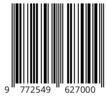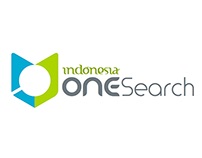Pengaruh Aplikasi Puzzlemaker terhadap Hasil Belajar Menyimak Materi Teks Berita Siswa Kelas XI SMA Negeri 1 Belitang III Tahun Pelajaran 2023/2024
Abstract
This study aims to determine the effect of using the P?r Le Maker application on student learning outcomes in listening to news text material in class XI. This study uses a pre-experimental design method, one group pretest-posttest design. The sampling technique used by the researcher is purposive sampling. The number of samples used is 30 students. Data collection techniques using interviews, tests, documentation, Data analysis techniques for this study: validity test, reliability test, normality test and paired sample t-test. The research instrument is an essay test of 20 questions. Based on the results of the study and data analysis, the ability to listen to news texts of students in class XI before using the puzzle maker media or pretest has an average of 67.86 Then after using the puzzle maker media or posttest there is an increase with an average of 83.23 Based on the paired sample test 1 test shows a sig value level (2-tailed) of 0.000 <0.05 with the results of the hypothesis Ho rejected and Ha, accepted. The conclusion of this study is that the use of the puzzle maker application has a positive influence on student learning outcomes in listening to news text material. It is hoped that the results of this study can be a reference for teachers and curriculum developers in integrating interactive and interesting learning technology in the learning process.
Keywords
Full Text:
PDFReferences
Ade, S. (2011). Model-model Pembelajaran. Bumi Aksara.
Alcindor, M. (2022). Application of a Blueprint Crossword Puzzle Tournament to Prepare Nursing Students for an Examination. Nurse Educator, 47, E152 - E153. https://doi.org/10.1097/NNE.0000000000001277.
Ali, M. (2020). Pembelajaran bahasa indonesia dan sastra (basastra) di sekolah dasar. PERNIK, 3(1), 35-44. https://doi.org/10.31851/pernik.v3i2.4839
Alshahwan, N., & Harman, M. (2011). Automated web application testing using search based software engineering. 2011 26th IEEE/ACM International Conference on Automated Software Engineering (ASE 2011), 3-12. https://doi.org/10.1109/ASE.2011.6100082.
Ardinata, K., & Parmiti, D. (2021). The Credibility of Listening Learning Videos for Elementary School Students. . https://doi.org/10.23887/jisd.v5i1.34369.
Arikunto, S. (2013). Prosedur Penelitian : Suatu Pendekatan Praktik. PT. Rineka Cipta.
Aziz, M., Al-Firdausy, M., & Syafi’i, M. (2022). Learning Listening and Reading Skills from the Arabic Language in a Psycholinguistic Perspective. AL-ISHLAH: Jurnal Pendidikan. https://doi.org/10.35445/alishlah.v14i4.2296.
Bostanov, V. (2021). Client Puzzle Protocols as Countermeasure Against Automated Threats to Web Applications. IEEE Access, 9, 75722-75728. https://doi.org/10.1109/ACCESS.2021.3082037.
Braasch, J. (2019). Deep Listening. Current Research in Systematic Musicology. https://doi.org/10.1007/978-3-030-15046-4_4.
Cachique, S., Correa, E., & Rodríguez-Garavito, C. (2020). Intelligent Digital Tutor to Assemble Puzzles Based on Artificial Intelligence Techniques. , 56-71. https://doi.org/10.1007/978-3-030-61702-8_5.
Cantarel, B., Korf, I., Robb, S., Parra, G., Ross, E., Moore, B., Holt, C., Alvarado, S., & Yandell, M. (2007). MAKER: an easy-to-use annotation pipeline designed for emerging model organism genomes.. Genome research, 18 1, 188-96 . https://doi.org/10.1101/GR.6743907.
Chen, Y. (2022). Psycholinguistic Analysis of the Semantic Meaning of Sentences in Listening Comprehension and Its Implications. Journal of Contemporary Educational Research. https://doi.org/10.26689/jcer.v6i11.4465.
Chou, P. (2018). Skill Development and Knowledge Acquisition Cultivated by Maker Education: Evidence from Arduino-based Educational Robotics. EURASIA Journal of Mathematics, Science and Technology Education. https://doi.org/10.29333/EJMSTE/93483.
Cott, J. (2020). Listening. SAGE Research Methods Foundations. https://doi.org/10.4135/9781526421036805735.
Danesi, M., & Danesi, M. (2019). Math Puzzles as Learning Devices. Interdisciplinary Perspectives on Math Cognition. https://doi.org/10.1007/978-3-030-22537-7_7.
Dey, M., & Sawalmeh, M. (2021). Psychological Processes in Language Learning and Teaching: Methods and Approaches of Psycholinguistics. British Journal of Applied Linguistics. https://doi.org/10.32996/bjal.2021.1.1.1.
Dong, T., Dontcheva, M., Joseph, D., Karahalios, K., Newman, M., & Ackerman, M. (2012). Discovery-based games for learning software. Proceedings of the SIGCHI Conference on Human Factors in Computing Systems. https://doi.org/10.1145/2207676.2208358.
Fortmann-Roe, S. (2014). Insight Maker: A general-purpose tool for web-based modeling & simulation. Simul. Model. Pract. Theory, 47, 28-45. https://doi.org/10.1016/j.simpat.2014.03.013.
Guigon, G., Vermeulen, M., & Humeau, J. (2019). A Creation Tool for Serious Puzzle Games. , 556-561. https://doi.org/10.5220/0007796405560561.
Higashida, H. (2010). Machine-Made Puzzles and Hand-Made Puzzles. , 214-222. https://doi.org/10.1007/978-3-642-15214-6_22.
Hou, X., Wu, Z., Wang, X., & Ericson, B. (2024). CodeTailor: LLM-Powered Personalized Parsons Puzzles for Engaging Support While Learning Programming. , 51-62. https://doi.org/10.1145/3657604.3662032.
Itzchakov, G., Weinstein, N., & Cheshin, A. (2022). Learning to listen: Downstream effects of listening training on employees' relatedness, burnout, and turnover intentions. Human Resource Management. https://doi.org/10.1002/hrm.22103.
Jang, D., Park, S., & Lee, S. (2022). Motion Puzzle: Arbitrary Motion Style Transfer by Body Part. ACM Transactions on Graphics (TOG), 41, 1 - 16. https://doi.org/10.1145/3516429.
Jarusek, P., & Pelánek, R. (2012). A web-based problem solving tool for introductory computer science. , 371. https://doi.org/10.1145/2325296.2325386.
Kanza, N. R. F., Lesmono, A. D., & Widodo, H. M. (2020). Analisis Keaktifan Belajar Siswa Menggunakan Model Project Based Learning Dengan Pendekatan STEM Pada Pembelajaran Fisika Materi Elastisitas Di Kelas XI MIPA 5 SMA Negeri 2 Jember. Jurnal Pembelajaran Fisika, 9(2), 71–77. https://doi.org/10.17509/sigmadidaktika.v11i2.59996
Kerkhof, M., Jong, T., Parment, R., Löffler, M., Vaxman, A., & Kreveld, M. (2019). Design and Automated Generation of Japanese Picture Puzzles. Computer Graphics Forum, 38. https://doi.org/10.1111/cgf.13642.
Khair, U. (2018). Pembelajaran Bahasa Indonesia dan Sastra (BASASTRA) di SD dan MI. AR-RIAYAH: Jurnal Pendidikan Dasar, 2(1), 81–98. https://doi.org/10.29240/jpd.v2i1.261
Klymchuk, S. (2017). Puzzle-based learning in engineering mathematics: students’ attitudes. International Journal of Mathematical Education in Science and Technology, 48, 1106 - 1119. https://doi.org/10.1080/0020739X.2017.1327088.
Lee, M. (2017). Guest Editorial Special Issue on Maker Learning in Computer Science and Engineering Education. IEEE Trans. Educ., 60, 38-39. https://doi.org/10.1109/TE.2016.2637738.
Malh, A., Wood, S., & Chung, K. (2023). The Art of Listening. Plastic and Reconstructive Surgery, 151, 921 - 926. https://doi.org/10.1097/PRS.0000000000010065.
McCann, S., Barto, J., & Goldman, N. (2019). Learning Through Story Listening. American Journal of Health Promotion, 33, 477 - 481. https://doi.org/10.1177/0890117119825525e.
Patil, P., Pednekar, D., Modak, T., & Kamble, S. (2022). Computer Vision and Artificial Intelligence Based Puzzle Solver. International Journal of Advanced Research in Science, Communication and Technology. https://doi.org/10.48175/ijarsct-3586.
Purba, N. (2018). The Role of Psycholinguistics in Language Learning and Teaching. , 6, 47-54. https://doi.org/10.30651/TELL.V6I1.2077.
Rahman BP., Asri, S., Munandar, Fitriani, A, , Karlina, Y., & Yumriani, Y. (2022). Pengertian Pendidikan, Ilmu Pendidikan dan Unsur-Unsur Pendidikan. Al Urwatul Wutsqa: Kajian Pendidikan Islam, 1–8. https://journal.unismuh.ac.id/index.php/alurwatul/article/view/7757
Ramlah, R., Riana, N., & Abadi, A. (2022). Fun Math Learning For Elementary School Students Through Interactive Puzzle Media. SJME (Supremum Journal of Mathematics Education). https://doi.org/10.35706/sjme.v6i1.5775.
Riyanti, A., Hidayati, N., Soulisa, I., Rosfiani, O., Khadijah, I., Wahyuni, R. S., ... & Ihsan, M. (2022). Strategi pembelajaran bahasa Indonesia. Penerbit Widina.
Rosmawati, E. (2020, May). Inovasi Pembelajaran Bahasa Indonesia Melalui Pendekatan Proses. In Prosiding Seminar Nasional Program Pascasarjana Universitas PGRI Palembang. http://dx.doi.org/10.51878/language.v4i1.3067
Sanjaya, W. (2006). Strategi pembelajaran berorentasi standar proses pendidikan. Perdana Media.
Sobale, S., More, H., Mulay, S., & Kshirsagar, M. (2023). Supervised machine learning model builder for regression and classification analysis featured as a web application. 2023 International Conference on Advancement in Computation & Computer Technologies (InCACCT), 16-21. https://doi.org/10.1109/InCACCT57535.2023.10141809.
Sugiyono. (2018). Metode Penelitian Pendidikan (Pendekatan Kuantitatif, Kualitatif, Dan R&D). ALFABETA.
Tang, W., & Wan, Q. (2024). Analysis of Young Learners’ Listening Skills. Journal of Contemporary Educational Research. https://doi.org/10.26689/jcer.v8i4.6683.
Trindade, J., & Trindade, L. (2018). Videogames in teaching/learning Physics: A case study with “Portal 2”. 2018 13th Iberian Conference on Information Systems and Technologies (CISTI), 1-5. https://doi.org/10.23919/CISTI.2018.8399354.
Villegas-Suarez, A., Lopez, C., & Sipiran, I. (2023). MatchMakerNet: Enabling Fragment Matching for Cultural Heritage Analysis. 2023 IEEE/CVF International Conference on Computer Vision Workshops (ICCVW), 1624-1633. https://doi.org/10.1109/ICCVW60793.2023.00178.
DOI: https://doi.org/10.31002/transformatika.v9i1.9653
DOI (PDF): https://doi.org/10.31002/transformatika.v9i1.9653.g3560
Refbacks
- There are currently no refbacks.
Copyright (c) 2025 Heni Fitriani, Puji Adi Pertiwi, Widia Sari

This work is licensed under a Creative Commons Attribution-ShareAlike 4.0 International License.


_(2)_.png)
.png)
_.png)
.png)
.png)















